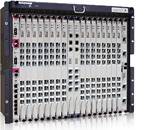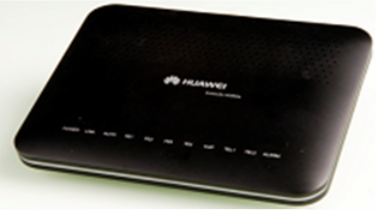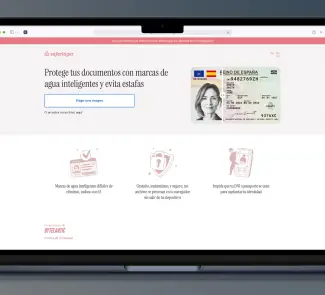Since last July Movistar has been conducting a pilot experience with a group of voluntary customers in Madrid’s Fuentespina Street. This involves, for the first time anywhere in Europe, the use of a new architecture that consists of not installing the gateway that provides cable and Wi-Fi connectivity to the equipment in the homes of our optical fibre customers.
This new alternative entails the functions performed up to now by the aforementioned gateway being carried out by a piece of network equipment located in Telefónica’s facilities. The cable connections of the customers’ equipment are made directly to the box (black or white according to the model) where the optical fibre ends, called the Optical Network Terminator (ONT). The customers’ equipment is provided with Wi-Fi connectivity via the in-situ installation of a Wi-Fi access point.
This new architecture means that an extremely complex piece of equipment can be removed from the customer’s home and replaced with a far more simple and efficient alternative that consumes less electricity, which is an advantage in current times. What is more, we are taking a piece of equipment out of the customer’s home that is far more susceptible to breakdowns; breakdowns that require a technician be sent out, which in turn means delays and deployment costs.
Our optical fibre customer services
And finally, this new technology offers Movistar the opportunity to simplify some of its services, such as TV or cloud file storage. The reason for this is that the gateway represents a barrier to some consumer electronic protocols such as DLNA (Digital Living Network Alliance) , which nowadays are commonly found in the home. Every customer device that uses this protocol (smart TV sets, gaming consoles, networked multimedia disks, etc.) will be able to access the services and contents contracted just as easily as when these were installed in the home itself.
More technically speaking, what Movistar’s optical fibre customers currently have installed in their homes is the following:

Illustration 1. Current optical fibre customer installations.
In this case, the optical fibre customer’s home is fitted with a piece of equipment known as Customer Provided Equipment (CPE). This is the device that marks the limit between the customer’s home network and the carrier’s network. In the architecture being tested in this pilot project, this is precisely the element that is removed (see illustration 2).

Illustration 2. Optical fibre customer installations with virtualised router
When the aforementioned element is removed, the customer’s home network extends out to the first piece of Movistar equipment, which in this particular case is an Optical Line Terminator (OLT), which enables contents based on protocols of the Universal Plug & Play- (UPnP) and DLNA-type to be sent between the Movistar network and that of the customer.
Pilot programme implemented using Huawei
This pilot experience is being implemented in conjunction with the supplier Huawei, whose MA5600Tis the equipment being used OLT :

And another Huawei product is being used as the ONT:

In order to involve normal (non-fibre) customers in the pilot programme, Movistar personnel visit the customer’s home and reconnect all of the equipment the customer might have connected to his or her gateway, such as an imaging decoder, his or her personal computers, video consoles, etc.) to the Huawei ONT (which is fitted with four Ethernet ports). At the same time the configuration is changed to that of the centralised OLT, all within a matter of minutes.








